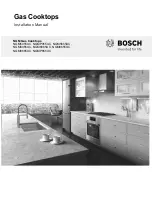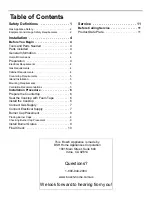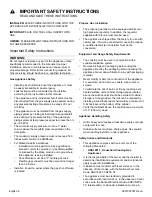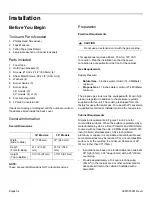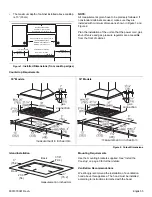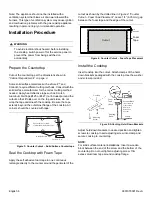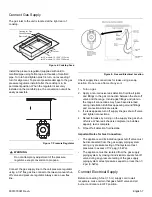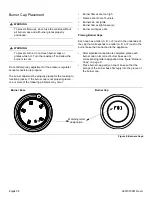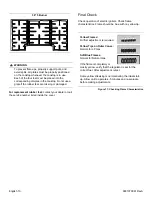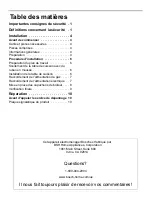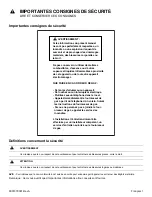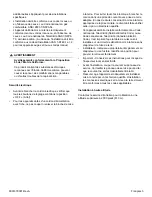
English 2 9001079091 RevA
9
IMPORTANT SAFETY INSTRUCTIONS
READ AND SAVE THESE INSTRUCTIONS
INSTALLER:
LEAVE THESE INSTRUCTIONS WITH THE
APPLIANCE AFTER INSTALLATION IS COMPLETE.
IMPORTANT:
SAVE FOR THE LOCAL INSPECTOR'S
USE.
OWNER:
PLEASE RETAIN THESE INSTRUCTIONS FOR
FUTURE REFERENCE.
Important Safety Instructions
WARNING:
Do not repair or replace any part of the appliance unless
specifically recommended in the manuals. Improper
installation, service or maintenance can cause injury or
property damage. Refer to this manual for guidance. All
other servicing should be done by a qualified technician.
Gas Appliance Safety
•
Install a gas shutoff valve near the appliance. It must
be easily accessible in an emergency.
•
Leak testing must be conducted by the installer
according to the instructions in this manual.
•
The appliance and its individual shutoff valve must be
disconnected from the gas supply piping system during
any pressure testing at pressures in excess of ½ psi
(3.5 kPa).
•
The appliance must be isolated from the gas supply
piping system by closing its individual manual shutoff
valve during any pressure testing of the gas supply
piping system at test pressures equal to or less than ½
psi (3.5 kPa)
•
The minimum supply pressure must be 1" water
column above the manifold pressure printed on the
data plate.
•
The maximum supply pressure must not exceed 14.0
inches water column (34.9Millibars).
•
For Massachusetts installations:
•
Installation must be performed by a qualified or
licensed contractor, plumber or gas fitter qualified
or licensed by the state, province or region where
this appliance is being installed.
•
Shut-off valve must be a "T" handle gas cock.
•
Flexible gas connector must be new and not longer
than 36 inches.
•
Installer - show the owner where the gas shut-off valve
is located.
Propane Gas Installation
•
The propane gas tank must be equipped with its own
high pressure regulator. In addition, the regulator
supplied with this unit must also be used.
•
The appliance is shipped from the factory for use with
natural gas. It must be converted for use with propane.
A qualified technician or installer must do the
conversion.
Equipment and Usage Safety Requirements
•
The cooktop must be used in conjunction with a
suitable ventilation system.
•
Remove all tape and packaging before using the
appliance. Destroy the packaging after unpacking the
appliance. Never allow children to play with packaging
material.
•
Never modify or alter the construction of the appliance.
For example, do not remove panels, wire covers or
screws.
•
To eliminate the risk of burns or fire by reaching over
heated surface units, cabinet storage space located
above the surface units should be avoided. If cabinet
storage is to be provided, the risk can be reduced by
installing a hood that projects horizontally a minimum of
5 inches beyond the bottom of the cabinet.
•
Verify that cabinets above the cooktop are a maximum
of 13" (330 mm) deep.
Appliance Handling Safety
•
Unit is heavy and requires at least two people or proper
equipment to move.
•
Hidden surfaces may have sharp edges. Use caution
when reaching behind or under appliance.
Safety Codes and Standards
•
This appliance complies with one or more of the
following Standards:
•
ANSI Z21.1, Household Cooking Gas
Appliances
•
It is the responsibility of the owner and the installer to
determine if additional requirements and/or standards
apply to specific installations.
•
Installation must conform with local codes or, in the
absence of local codes, with the National Fuel Gas
Code, ANSI Z223.1/NFPA 54.
•
The appliance must be electrically grounded in
accordance with local codes or, in the absence of local
codes, with the National Electrical Code ANSI/ NFPA
70, latest edition. In Canada, installation must be in

